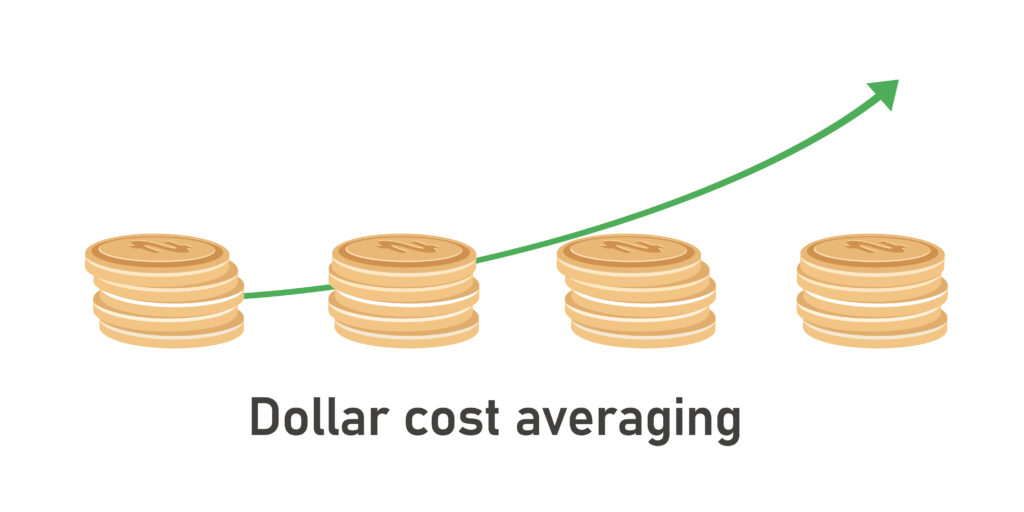How to Survive this Crypto Winter & Come Out on Top
Just when the market started showing signs of recovery from its recent crypto winter, which began in late 2021, fueled by rising inflation, interest rates, a potential recession and the Terra crash, we got hit by another blow – the FTX collapse.
After reaching its peak in 2021, when Bitcoin was trading for $69,000, the market significantly plummeted in early 2022 due to an overall economic downfall, followed by the Terra crash in May, after which we officially entered a crypto bear run.
But what we didn’t expect was that the market could get worse, which it did. Now, here we are, closing the year with Bitcoin trading at $16,900. It’s clear that the crypto winter will last longer than we expected, but it’s not necessarily all bad.
The following are some tips that will not only help you survive this crypto winter but hopefully come out on top of it.
But before that, let’s quickly go over what crypto winter is and how to know if you’re in one.
What is a Crypto Winter?
Crypto winter is essentially the equivalent of a bear run in the stock market.
What’s a bear run?
It’s when a market experiences prolonged price plunges. However, unlike a bear run in the stock market, which can last up to several weeks, months or even years, crypto winter almost always lasts for years, with the most recent one lasting for almost three years, from January 2018 to December 2020.
How to know if you’re in one?
In the stock market, a bear run occurs when prices plunge by 20% from their recent high. Unfortunately, we have no such metric to say the same about the crypto market. The only indicator of a crypto winter is an extended market downturn, which we’re experiencing as of now.
Long story short, it’s safe to say we’re officially in a crypto winter right now.
Fundamentals of Surviving a Crypto Winter
Before we move on to the tips, let’s quickly revise the fundamentals of making good investment decisions because everything we’ll discuss today is built on top of these foundational principles.
Only invest what you can afford to lose
If you can’t withstand losing all your crypto investments, you can’t afford the risk of investing the amount you are considering.
Invest an amount that will not harm or change your lifestyle in any way. Do not let peer pressure make you throw away all your life savings in the name of investment.
Do your research
The cryptocurrency market is vast and complex, and it’s very risky, and some might say stupid, to dive into it without conducting proper research. With thousands of cryptocurrencies to choose from, it’s crucial to understand and research the fundamentals before investing in a coin or project.

At the time of writing, there are over 21,000 cryptocurrencies as per CoinMarketCap, 90% of which are shit coins and hyped up projects with no real-world utility.
Avoid herd mentality
Continuing where we left off, if you do your research right, you don’t need to rely much on what everyone else is doing. You don’t need to sell a good asset just because everyone else is panic selling. You don’t need to buy a worthless coin just because everyone else is buying.
Don’t let FOMO get the better of you. Trust your analysis and stick to your conviction. And that’s not to say that you shouldn’t learn from others, but just don’t make your long-term investment decisions purely based on market trends.
Be patient
Once you do your research and make your investment decisions, whether it’s to buy, not buy, sell or not sell, the next step is to be patient. The market may not be in your favor right now, but assuming you did your research right, the market will turn, and when it does, you’ll be the first to reap the benefits.
Patience and discipline are key to long-term investment success, whether it’s crypto or any other asset.
Keep HODLing Bitcoin and Ethereum
With Bitcoin having a market cap of $326 billion and Ethereum with $153 billion, these two single-handedly account for more than 50% of the total crypto market cap. Hence, the name “blue-chip coins”.
One of your best chances at surviving the crypto winter is investing in (if you haven’t already) and HODLing Bitcoin and Ethereum.
Why?
Because Bitcoin and Ethereum have gone through far more market downturns and bear runs than any other coin, and almost always, not only did they survive these long bearish markets but peaked in prices afterward.
We’re not claiming that all the other coins would disappear. However, when compared to the newer, highly volatile tokens with no track record of their performance, Bitcoin and Ethereum are far less volatile, with a better track record of withstanding these shock waves.
Try Dollar Cost Averaging (Instead of Trading)

Many people use dollar cost averaging as their primary investment strategy, but it’s equally as effective as a strategy, if not more, to survive crypto winters.
Dollar-cost averaging involves investing equal dollar amounts in assets at regular intervals. It allows you to spread out your purchases so that you’re less affected by market timing. Instead of attempting to time the market, you buy at different price ranges, which reduces investment risks by building your position over time.
Read our in-depth guide on dollar cost averaging
Prioritize Utility Over Hype
Cryptocurrencies are more than just an investment instrument. Many of them have real-world use cases and applications, which is what ultimately determines their relevance and validity in the crypto industry over the long run.
For instance, Ethereum was foundational in building the DeFi sector because of its smart contract functionality. After which, many other blockchain, like Solana, Ergo, Polkadot, etc., followed suit. That is why Ethereum is a much better and relatively safer investment.
Many cryptocurrencies fail to withstand crypto winters because they don’t have any real utility in the real world. Their value only comes from hype, which inevitably disappears after some time.
One such example is Dogecoin, which was essentially a meme coin that gained massive popularity and price surge before crashing after some time.
NFTs also became mainstream in the last couple of years. Many NFT artists made millions selling NFTs. While some of these were good, most were pretty much a joke. People were paying hundreds of thousands of dollars for pictures of monkeys.
But now that we’ve entered a bear market, most of these NFTs have lost their original value, except the ones with real utility.
So, basically, always prioritize utility and don’t get blinded by the hype.
Buy the Dip
Even though times like these are pretty scary for investors, veteran investors actually look forward to price dips so that they can buy more crypto.
Why?
Most experts and crypto advocates suggest that, much like previous crypto winters, this, too, is temporary. Knowing that the market will eventually recover and rise again, bear runs can actually prove to be the perfect opportunity to double down on your investments. But this will only work when you do it right.
Imagine buying Bitcoin during the last downturn and selling it at its current value.
Firstly, if you’re planning to buy the dip, you should probably stick to Bitcoin and Ethereum for reasons discussed before in the article. Plus, Bitcoin and Ethereum, along with a few others, are the only cryptocurrencies with real-world use cases and utility.
If you have a higher risk appetite, you may even want to dabble into new cryptocurrencies and projects. But as mentioned in the last section, you must do so based on proper research and analysis, not based on hype.
You should also know how to tell if prices will dip further. You don’t want the prices to plummet further after you buy. This is where your expertise in fundamental and technical analysis will come into play.
Utilize Losses to Save More Taxes
Sometimes, you can take it too far with patience. It’s okay to make some portfolio adjustments and sell the assets that are performing poorly to harvest some losses, especially if you don’t see any potential for them in the future.
Bitcoin.Tax can help with this. It can integrate with all your exchange and wallets accounts and show you opportunities for tax loss harvesting, including calculations on how much you can offset, save in your taxes and more.
However, if you decide to sell, do it smartly and utilize your losses (or gains) to make the most out of it.
Sell Long-Term Investment First
Even though different countries have different tax laws, most, if not all, countries have significantly lower tax rates on long-term capital gains, which include gains from crypto. Find out what the tax laws in your country are.
For instance, in the US, short-term capital gains are subject to 10-37% tax rates, while the tax rates for long-term gains are only 0-20%. Find out more about crypto taxes in the US.
So, if you’re selling your crypto, start with long-term investments (older than 12 months) first.
Carry Forward your Losses
If you have no gains to offset your losses against, carry them forward to future years to offset future gains.
In fact, if your losses are more than your gains in a tax year, you can use the remaining losses to deduct your taxable income up to a certain amount. In the US, it’s $3000. If you still have any losses left after that, they will be forwarded on to future years. If you have previous losses that you didn’t write off yet, now might be a good time to do so to survive this crypto winter.
Wash Sale Rule (for US Taxpayers)
The wash sale rule, or some variation, exists in every country’s tax laws. Check out our complete guide on the wash sale rule to learn about it in depth. But to quickly summarize, it’s a rule or law that prevents taxpayers from exploiting a tax loophole.
The law prohibits you from claiming losses on crypto you repurchase within 30 days of selling it. Likewise, you can’t claim losses on your crypto if you previously bought a newer batch of the same crypto in the last 30 days.
However, the catch is it usually only applies to stocks and securities or, at least, that is the case in the US.
So basically, you can sell your assets, realize the losses and immediately buy them back but still get to use the losses to offset gains and reduce your tax bill.
Will Crypto Bounce Back?

As mentioned, crypto experts and advocates believe that the future of crypto still looks bright. If anything, experienced investors think crypto winters like these are actually good for the market and the overall industry.
Why?
Because it eliminates the bad actors in the market, leaving the projects with real value and utility standing strong. However, keep in mind that the market may get worse and uglier before it eventually gets better. Until then, these tips will help you survive this crypto winter.